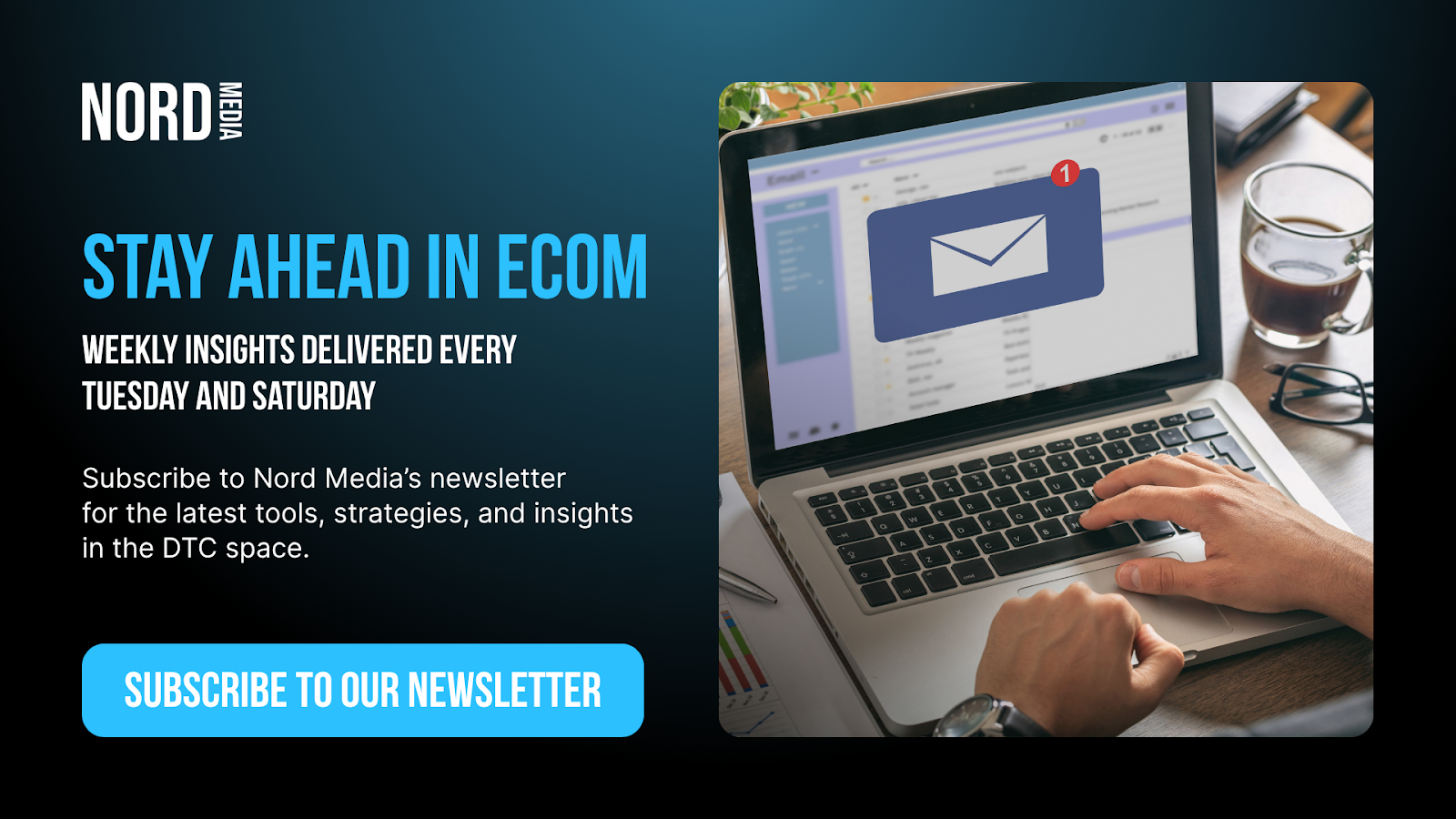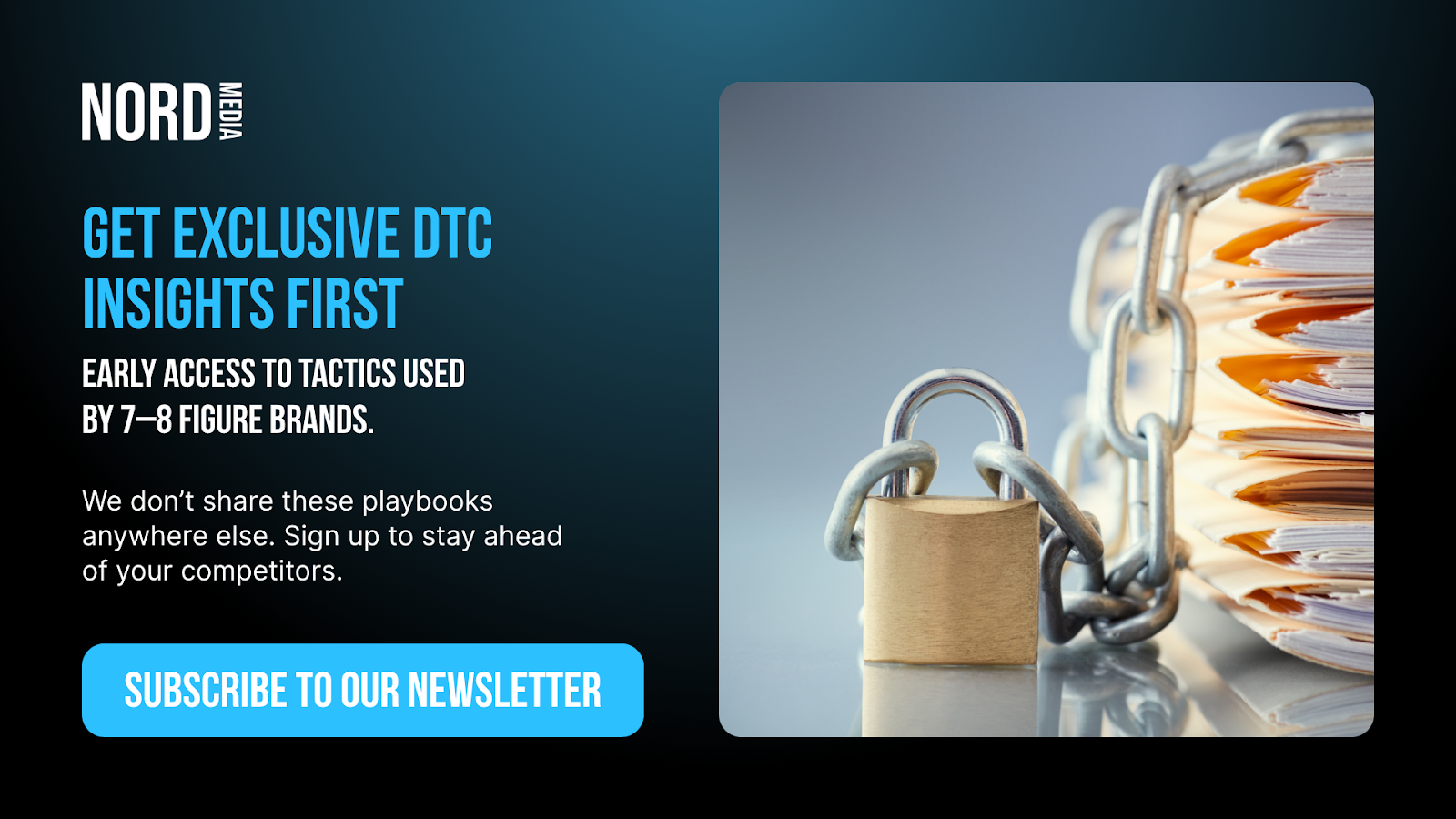Key Takeaways:
- Quality Score is a Core Lever: Improve your ad relevance, click-through rate, and landing page experience to lower your cost-per-click and win better placements.
- Align Budgets with Business Outcomes: Focus on metrics like Cost Per Acquisition (CPA) and Return on Ad Spend (ROAS) rather than vanity metrics like clicks or impressions.
- Use Data to Inform Bidding: Transition from manual bidding to automated strategies (Target CPA, Target ROAS) only when you have sufficient, clean conversion data to feed the algorithm.
If you’ve tried to piece together Google Ads costs from scattered benchmarks, you know the truth: “How much do Google Ads cost” isn’t a fixed number; it’s a strategic variable. Costs shift with competition, quality, and execution. The winners aren’t guessing; they’re budgeting with intent, shaping auction dynamics, and tying spend to outcomes, not vanity metrics.
At Nord Media, we’ve seen the pitfalls of undisciplined paid search: bloated accounts, wasted budgets, and blind acceptance of rising CPCs. The antidote is structured, has rigorous keyword mapping and ruthless query pruning, is creative, boosts quality scores, and bidding based on lifetime value, not just first orders.
This guide breaks down Google Ads costs by the levers you can control, influence, and account for, so you can spend smarter and scale profitably.
Understanding How Much Google Ads Cost
Google Ads costs are not fixed; they’re determined by an auction system where advertisers bid on keywords. The actual amount you pay per click depends on your bid, competition, Quality Score, and the relevance of your ads and landing pages.
On average, most industries see $1–$4 per click on the Search Network, while highly competitive verticals like finance or legal can exceed $50 per click. Display Network clicks are often under $1.
But CPC alone doesn’t tell the full story. The real focus should be on cost per acquisition (CPA) and return on ad spend (ROAS). Smart advertisers align spend with unit economics, factoring in margins, conversion rates, and lifetime value to ensure every dollar invested drives profitable growth.

Deconstructing Your Google Ads Budget: The Key Factors
Building a profitable Google Ads budget isn’t about guessing a monthly spend; it’s about understanding the levers influencing costs and aligning them with your goals. A strong ecommerce growth strategy ensures that every dollar spent on ads supports broader business objectives.
Keyword Competition
High-intent keywords with strong commercial value (like “insurance quotes” or “legal services”) are far more expensive than branded or informational terms. If you’ve ever wondered how much do Facebook ads cost, you’ll notice similar dynamics at play, competition directly drives up pricing across platforms.
Quality Score
Your ad relevance, CTR, and landing page experience directly affect costs. A higher Quality Score means you can win better placements at a lower CPC.
Target Audience & Geography
Costs vary by location, device, and demographic targeting. Competing for premium audiences in high-demand markets often raises CPCs.
Bidding Strategy
Manual CPC offers control, but automated strategies (Target CPA, Target ROAS) perform best with clean data and enough conversion volume.
Conversion Funnel
Clicks don’t equal sales. A strong funnel, from ad creative to landing page, ensures more of your spend turns into revenue.
Bidding Strategies And How They Impact Cost
Choosing the right bidding strategy determines how aggressively Google Ads pursues clicks, conversions, or revenue and how much you ultimately pay. The wrong setup can burn through your budget fast; the right one aligns with your goals, data quality, and risk tolerance, compounding efficiency over time.
Manual CPC: Control With Limits
It gives hands-on control at the keyword level, which is practical for testing or tight budgets. The drawback is that there are no auction-time signals, making scale harder and costs uneven.
Maximize Clicks: Quick Volume
It drives traffic fast, which is helpful for data gathering or remarketing pools. However, without guardrails, it skews toward cheap, low-quality clicks. Use negatives and bid caps.
Target CPA: Predictable Acquisition
Bids for conversions at a set cost. Works once you have clean tracking and enough conversions. Unrealistic targets or noisy data can throttle results.
Target ROAS: Revenue Focused
Optimizes bids for predicted revenue, which is best for e-commerce with strong tracking. Balance ROAS targets carefully, too high limits scale, too low cuts profit.
Maximize Conversions/Value: Fast Learning
It quickly boosts volume or revenue, making it ideal for promotions. However, strict budgets and value rules are needed to avoid overspending.
Smart Bidding Success Factors
Automation only works with clean data, stable budgets, and clear signals. Feed it accurate conversions for reliable cost efficiency.
When To Switch
Once you hit steady conversions, move from manual to smart bidding. Start broad, then refine with Target CPA or ROAS, allowing complete learning cycles.

How To Set A Realistic Daily Budget For Google Ads
Setting a daily budget isn’t guesswork; it’s a math problem with live ammo. You’re dealing with auction dynamics, variable intent, and creative that can swing performance by double digits. Start with your financial constraints, map them to CPC realities in your category, and set rules that let winners scale while cutting losers fast. Your guardrails: your unit economics, your conversion data, and a feedback loop tight enough to adapt mid-flight.
Anchor To Unit Economics First
Work backward from your target CPA or ROAS. For example, if your average order value is $80 and your blended ROAS target is 3x, your max allowable CPA is about $26–$27 after factoring margins and returns. That figure becomes your North Star, budgets should only fund traffic that can realistically achieve it.
Estimate Traffic Needs Via Cpc And Cvr
Use recent or benchmark data to project volume. If your site converts at 3% and your average CPC is $1.50, you’ll get one sale per ~$50 spent. If your CPA target is $25, you’re either overpaying for clicks, under-converting, or both. Fix keywords, match types, and creative before scaling budget.
Start Controlled, Then Expand By Performance
Launch with budgets that generate meaningful data in 3–5 days without overexposing unproven keywords. Increasing spend gradually once campaigns hit CPA/ROAS targets over a rolling 3–7 day window. If performance drops after scaling, revert and diagnose.
Allocate By Intent, Not Ego
Not all queries deserve equal spend. Brand terms and high-intent non-brand searches usually earn the biggest share. Keep exploratory campaigns small, CPA-capped, and shift budget fluidly based on trailing results, not assumptions.
Use Bid Strategies With Guardrails
If running Maximize Conversions or Target CPA/ROAS, set budgets high enough for learning but not unlimited. Too low, you starve the algorithm; too high, you waste cash. Watch impression share lost to budget and CPC volatility to recalibrate.
Reconcile Budget With Cash Flow And Seasonality
Tie budgets to real-world limits like inventory, fulfillment, and demand spikes. Cut back if margins are tighter or push more when promos are planned. Don’t pay for traffic you can’t monetize due to stockouts or delays.
Enforce Tight Feedback Loops
In the first two weeks, review search terms, CPCs, and conversion paths daily, then twice or three times weekly. Pause wasteful queries and shift spending toward proven winners. Rotate creative before fatigue drags down efficiency.
Build A Cushion For Testing
Reserve a portion of budget for new keywords, audiences, or creatives. Keep tests isolated, with clear hypotheses and time-boxed budgets, so they don’t pollute your core performance.
Maximizing Your Ad Spend: Tips For Cost-Effective Campaigns
Paid search isn’t a slot machine; it’s an operating system. The brands that win treat budget like capital allocation, not a bet. That’s why understanding what is paid media helps frame Google Ads in the broader context of integrated marketing.
Start With Intent, Not Keywords
Build campaigns around commercial intent tiers, separate high-intent queries (brand, product-specific, “buy now”) from research queries. Bid confidently on bottom-of-funnel terms and throttle mid-funnel with tighter caps and stricter match types. This avoids paying discovery prices for purchase intent.
Structure For Control And Signal
Keep campaigns lean. Group tightly related keywords, align them to a single landing page, and avoid bloated ad groups. Use exact and phrase match to protect CPCs and feed the algorithm clean signals. Add negatives early and often to block irrelevant clicks that drain budget.
Pair Smart Bidding With Real Constraints
Automated bidding works when it has guardrails. Use tCPA or tROAS only after you’ve met minimum conversion thresholds. Start with Max Clicks or ECPC while you gather data, then graduate to tROAS with realistic targets based on actual margins, not wishful thinking.
Match Creative To Query
Write ads that mirror the user’s search language and stage. Lead with the core value prop, price or offer when relevant, and push to the most specific landing page available. Use responsive search ads but pin headlines that carry the conversion trigger to maintain control.
Optimize The Landing, Not Just The Bid
A sub-2-second load time, clear headline-message match, trust signals above the fold, and a frictionless checkout will drop your CPA faster than any bid tweak. Track micro-conversions, add to cart, scroll depth, and click on key elements to guide iterative changes.
Budget By Marginal Return
Shift spend daily toward segments with the best incremental ROAS. Break out device, geo, and time-of-day to find where conversions come cheapest. Cap budgets where marginal CPA drifts above your target, and redeploy to higher-yield campaigns instead of chasing volume.
Use Data Exclusions And Seasonality Adjustments
Protect performance during anomalies. Exclude outlier days from bid models after promos or outages, and set seasonality adjustments ahead of launches or sales. This keeps automated strategies from overcorrecting on noisy data.
Test Cadence With Clear Winners
Run controlled A/Bs on headlines, CTAs, and landing page layouts. One test at a time, 90% confidence minimum, and a defined stop-loss. Roll forward only what beats your current control on cost per acquisition, not just CTR.
Measure The Full Funnel
Attribute revenue beyond last click. Import offline conversions, connect CRM data, and calibrate assisted conversions. When the math reflects reality, budget flows to the channels and queries that actually print profit, not just clicks.
Maximizing ROI: Tips To Control Google Ads Costs
Managing spend isn’t about cutting, it’s about sharpening. The goal is to align budgets with intent, prune waste ruthlessly, and compound what works through disciplined iteration. Comparing Google Ads vs Facebook Ads gives marketers clarity on where budgets stretch further depending on business type, funnel stage, and targeting capabilities.
Start With Intent, Not Volume
Anchor your campaigns in high-intent search terms first. Prioritize exact and phrase match for commercial queries, then carefully expand to broader terms once your CPA is stable. Let demand quality guide budget allocation, not impression volume.
Structure Campaigns For Control
Separate branded, non-branded, and competitor terms into distinct campaigns. Isolate top performers in single-keyword ad groups to improve QS and tighten bidding. This segmentation gives you clean signals and lets you shift spend where returns are provable.
Use Negative Keywords Aggressively
Block irrelevant modifiers early and keep a running negative list by theme. Review search terms daily at launch, then weekly, cutting anything that drives clicks without downstream actions. Protect your CPC by refusing to pay for curiosity clicks.
Align Bidding With Real Value
Set target CPA or target ROAS using first-party conversion values. Feed the algorithm clean data: exclude duplicate events, map micro-conversions to proxy values only when they predict revenue, and shorten conversion windows if they inflate attribution.
Fix The Funnel Before Raising Budgets
Improving landing page load time, message match, and offer clarity often reduces CPA faster than bid tweaks. Tighten your path to purchase, fewer fields, stronger social proof, and a single primary CTA. Better conversion rates compound every dollar you spend.
Iterate Creative With Hypothesis-Driven Tests
Test headlines and descriptions against a single variable at a time: price framing, urgency, benefit hierarchy, or objection handling. Retire underperformers quickly, but allow enough data to reach significance. Ads should echo the exact language of your best queries.
Pace Budgets With Guardrails
Set daily caps aligned to break-even CAC and segment by device and geo. Use dayparting to limit spend during low-performance hours, then reinvest in time blocks and locations with superior CVR. Scale in measured steps, 10–20% at a time, to preserve algorithm stability.
Monitor The Right Metrics
Track blended CAC, marginal ROAS, and impression share lost to rank alongside standard CPA/ROAS. If CPAs climb as impression share drops, you’re underbidding or losing ad relevance. If ROAS holds but marginal ROAS falls, pull back and consolidate winners.

Final Thoughts
Google Ads don’t have a one-size-fits-all price tag; they’re a dynamic investment shaped by competition, quality, and execution. The brands that win aren’t spending blindly; they anchor budgets to unit economics, structuring campaigns for control, and aligning bids with real value. Working with a seasoned Google Ads agency gives you the expertise to scale responsibly.
You can transform ad spend from a cost center into a profit engine by focusing on efficiency over vanity metrics and sharpening every funnel layer. With disciplined strategy and the proper guardrails, Google Ads becomes a scalable growth channel, not just an expense.
Read also:
- Facebook Ads Pricing Explained: What You’ll Really Pay Per Click Or Impression
- The Ultimate Ecommerce Growth Strategy: How To Scale Profitably In 2025
- Facebook Ads Vs Google Ads: Performance Benchmarks For Ecommerce Marketers
Frequently Asked Questions About Google Ads Costs Explained: Budgeting For Paid Search Success
How much do Google Ads cost?
Costs vary by industry, competition, and quality score. Typical CPC ranges are 1–1–1–3 for search in many ecommerce niches and 4–4–4–8+ in competitive verticals. Expect higher CPCs for high-intent keywords and lower on Display/Performance Max. Focus on CPA/ROAS, not just CPC.
Is $100 enough for Google Ads?
It’s enough for a limited test, but not for statistically confident decisions. Use it to validate tracking, refine keywords, and gauge initial CPCs. Then scale with clear CPA/ROAS targets and negative keyword hygiene.
Is $20 a day good for Google Ads?
It can work for tight, high-intent keyword groups or remarketing. Keep campaigns focused, cap match types, and limit geos. Ensure conversion tracking is flawless to extract learnings from smaller data sets.
Why did Google Ads charge me $500?
Likely due to your daily budget multiplied over a month (spending can fluctuate day-to-day), reaching your billing threshold, or an automated budget increase. Check billing settings, account thresholds, campaign budgets, and spend by day. Contact support if it looks anomalous.
Do Google Ads charge monthly?
You’re billed when you hit a billing threshold or at the end of a monthly cycle, whichever comes first. Charges reflect actual ad spend plus applicable taxes/fees. You control budgets; Google manages the billing cadence.
Is Google Ads cheaper than Facebook?
Not necessarily. CPCs can be higher on Google due to high intent, but conversion rates often offset the cost. Meta may have cheaper clicks but broader, colder traffic. Evaluate on blended CPA and MER/ROAS, not click price alone.












